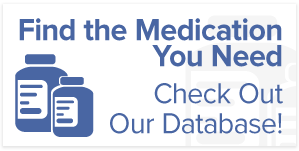Medicare Part D: What You Should Know
Medicare Part D, also known as the Medicare prescription drug benefit, is a government-funded program that subsidizes the costs and insurance of prescription drugs for certain beneficiaries. Enacted only within the past decade, it represents the single largest overhaul of Medicare vis-a-vis prescription drugs. If you or someone you know is currently struggling to pay for the cost of prescription medications, knowing what Medicare Part D is and what it entails could not be of a higher importance. With that in mind, here is everything you should know about it.
Medicare Part D: Facts & Statistics
Medicare is the federal social insurance program of the United States, providing coverage for people who are 65+ years of age, as well as certain individuals with disabilities (regardless of their age). Enacted in 1966 as part of President Lyndon Johnson’s “Great Society,” Medicare provides all or part of the health insurance for over 48 million Americans, and is currently utilized by about 30 private insurers.
Medicare Part D was initiated by the Bush administration in 2003 as part of the Medicare Modernization Act, and it went into effect on the first day of 2006. The most recent statistics estimate that about 24-25 million people receive prescription drug coverage through Medicare Part D, with some being “dual enrolled” (covered by both Medicaid and Medicare). A variety of insurance providers offer prescription coverage through this program, as well, with the primary ones being UnitedHealth, Humana, and WellPoint.
How Medicare Part D Works
If you are a potential beneficiary of Medicare Part D, then you will undoubtedly be more interested in the logistical details of this program. Here are the answers to all your questions, from eligibility and enrollment to which specific drugs are covered or excluded.
Who is Eligible?
Anyone who is eligible for coverage through the initial Medicare programs (Part A, inpatient insurance and Part B, outpatient insurance) is also eligible for prescription drug coverage through Medicare Part D. However, they must already be enrolled with Parts A and B before enrolling in Part D.
How Do You Enroll?
The enrollment process is fairly simple and straightforward. If you or a loved one is interested in enrolling, you can do so through printing an enrollment form from the Medicare website and sending it to them, their website’s Medicare Plan Finder, or by calling them directly.
What Medications are Covered?
Though eligibility works much the same as “original Medicare” (parts A and B) does, drug coverage does not. Rather than being standardized, it is handled by the insurance companies themselves (though it is strictly regulated by the Centers for Medicare and Medicaid Services). Insurance providers offer Medicare Part D prescription coverage, and can choose to include or exclude coverage of certain drugs or entire types of drugs.
Universally, drugs excluded from Medicare Part D coverage are those that treat:
- Weight gain or loss
- Infertility
- Sexual/erectile dysfunction
- Cosmetics
- Cold/cough relief
- Vitamins and minerals (except prenatal vitamins and fluoride preparations)
If you or someone you know is interested in more information on how to get financial assistance for prescription medications, whether through Medicare Part D or not, call Advocate my meds at 877-596-1604 today!







